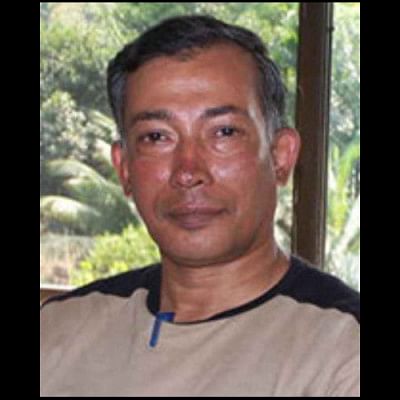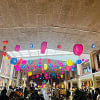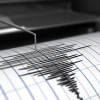'Dhaka is one of the riskiest cities for earthquakes in the world'

Dr Syed Humayun Akhter, Professor and Chairman of Department of Geology at Dhaka University, speaks to Nahela Nowshin of The Daily Star about earthquake risk assessment and management in Bangladesh.
The Daily Star (TDS): It's been said that while earthquakes are a natural phenomenon, the destruction caused by them are to a large extent man-made.
Dr Syed Humayun Akhter (SHA): Regardless of the magnitude and distance of the earthquake, if the ground shaking reaches more than VII on the Modified Mercalli Intensity (MMI) scale then infrastructure is likely to be damaged or destroyed. The question is: are these structures strong enough to withstand such ground shaking?
Dhaka is a megacity that continues to expand. It's densely populated -- with an average population of 45,000 per square km -- and is extremely ill-planned. Before the liberation era, the number of buildings was much less than now. When earthquakes took place then, there wasn't much damage. With time, buildings continued to be built starting from the Buriganga River expanding northward. These buildings were made on lal mati -- this one million year old red soil is compact and of very good quality. Most of the buildings made on this soil were one or two storeyed.
After liberation, however, Dhaka expanded very quickly due its growing importance as the capital. Buildings were being built on the riverside humus soil in the east and west. In the low lying areas, they were built using the arching method. These attractive, multi-storey buildings were constructed using faulty designs. The bottom floor is a parking space, and they are called soft story buildings. Due to earthquakes or even strong winds, the lateral deflection of the building top caused by the ensuing tremors cannot be resisted due to these large, unobstructed spaces on the bottom floor (known as a soft storey collapse). These soft story tall buildings are vulnerable to distant earthquakes.
An overwhelming number of buildings have been built flouting the Bangladesh National Building Code. The code didn't even exist prior to 1993. The buildings made according to Rajuk's plan exceeded the number of floors than allowed -- largely to accommodate the growing number of people. For owners of these buildings, it meant more money. These practices became widespread. We have a history of collapsed buildings (Rana Plaza) resulting from these malpractices.
To put this into perspective, in the event of an earthquake of a magnitude of 5-6 (on the Richter scale), or a recurrence of the 1885 Bengal Earthquake or the 1897 Great Indian Earthquake beneath Dhaka city with its population of 15 million, widespread brick masonry, non-engineered and poorly constructed buildings would be hit worse than ever in the history of Dhaka. The catastrophic picture will be beyond our imagination and could even lead to abandonment of the city.
TDS: People in Bangladesh have more pressing problems than to worry about a future earthquake. Tell us something in terms of preparedness in the event of an earthquake.
SHA: If you ask the government, they'll say they're prepared. In the last two or three years, we saw some risk reduction initiatives such as the Comprehensive Disaster Management Programme. The objective of the programme was to strengthen national capacity to manage such risks and the ensuing response and recovery efforts. About 60,000 volunteers were supposed to be trained but so far only 16,000 have been trained. This is beyond insufficient for earthquake management.
My question to the government is: despite experts' warning of there being a high risk of earthquakes in Bangladesh, why are the general people not being given information on earthquake preparedness? Why are no precautionary measures being taken? I don't see any such necessary steps being taken by the government.
I personally believe the first step should be about spreading awareness and information on basic preparedness on individual, household and community levels. In the past few days, we saw people running out of buildings in a state of panic and chaos because of which six people died. Even the fire brigade suggested to people that they should exit the buildings they were in. That's just wrong. People should instead be told about the quick steps to take in such instances. Even the volunteers were incorrectly trained by the fire brigade. How will they help others when they can't even save themselves?
TDS: What are some recommendations for earthquake preparedness?
SHA: The 'drop, cover and hold' method is highly recommended and it's practiced globally. Drop to the ground, get under a table and hold on until the shaking stops. If that's not possible, then cover your head immediately to prevent a head injury. It's not recommended to stay near doors or windows. Seeking shelter in wall corners is better.
TDS: In light of the earthquake in Nepal, is the earthquake risk in Bangladesh greater now since our tectonic plates are interconnected?
SHA: Earthquakes and tremors depend on a lot of factors such as the proximity of the epicenter to Bangladesh. The country's position adjacent to the very active Himalayan front in the north and Burma deformation front in the east expose it to strong shaking from a variety of earthquake sources that can produce tremors of magnitude 8 or greater. There are epicenters very close to Bangladesh so this is a high risk area. It also depends on the proneness of a certain area to earthquake damage. The more the earth shakes, the more destruction there will be. Then there's the population density which is extremely high. There's a lack of education, awareness and preventive measures. Urban planning is poor, there aren't open spaces to seek shelter in, and hospitals are ill-equipped. All these factors combined heighten the risk. Dhaka is one of the riskiest cities for earthquakes in the world.

 For all latest news, follow The Daily Star's Google News channel.
For all latest news, follow The Daily Star's Google News channel. 








Comments